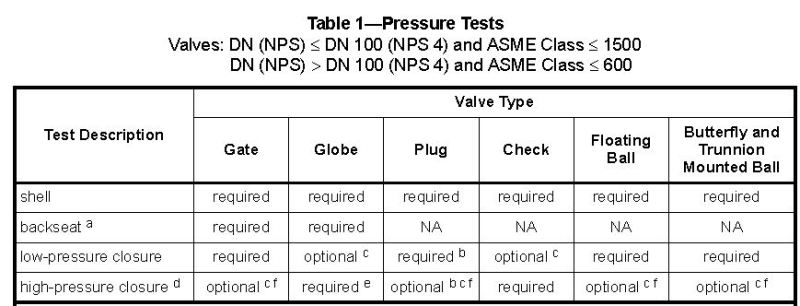mulz
Mechanical
- Jul 15, 2015
- 18
Dears,
Is it required for gate valve to do seat test both side?
Thanks in advance
Romullo
Is it required for gate valve to do seat test both side?
Thanks in advance
Romullo
Follow along with the video below to see how to install our site as a web app on your home screen.
Note: This feature may not be available in some browsers.

